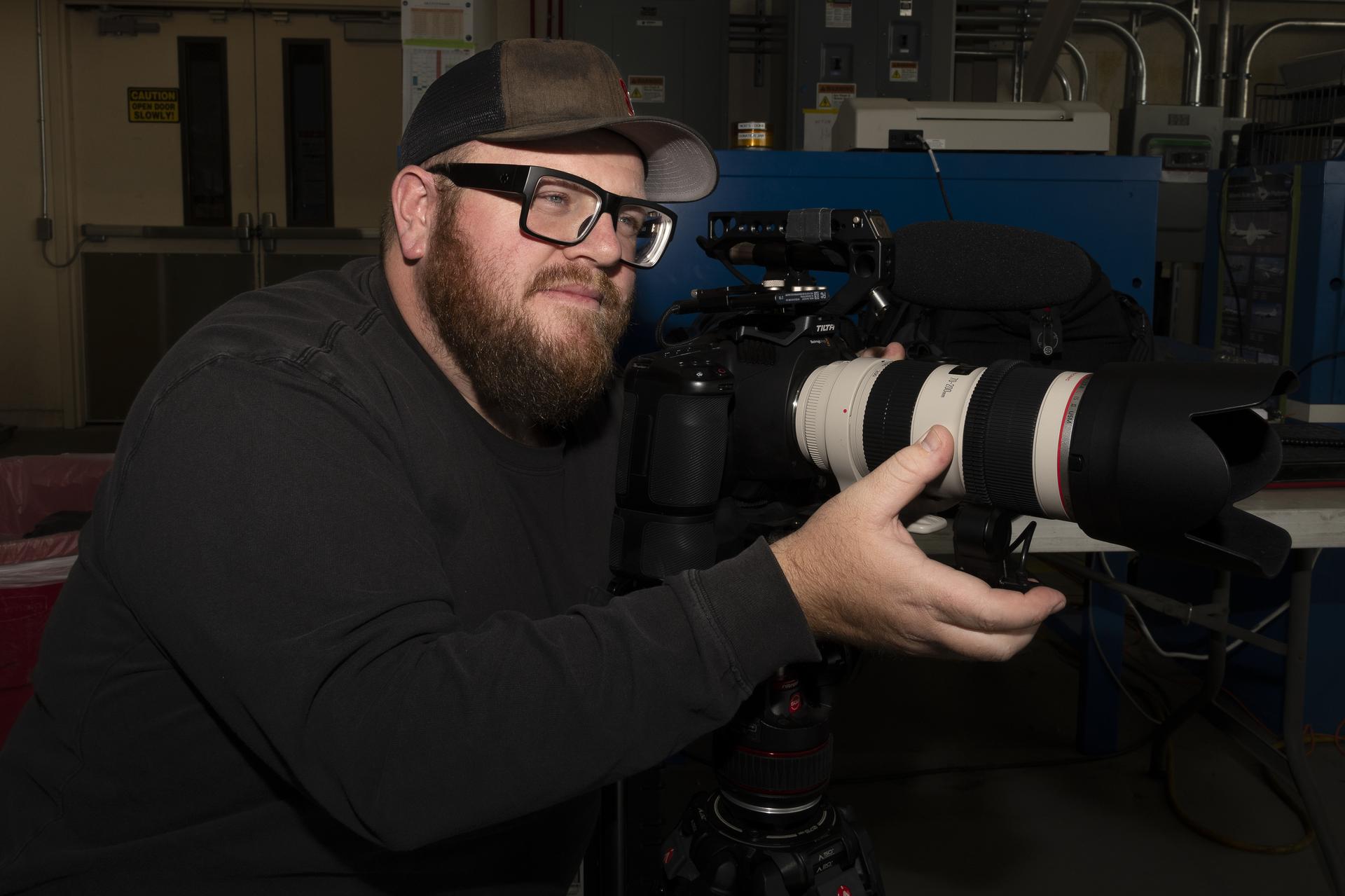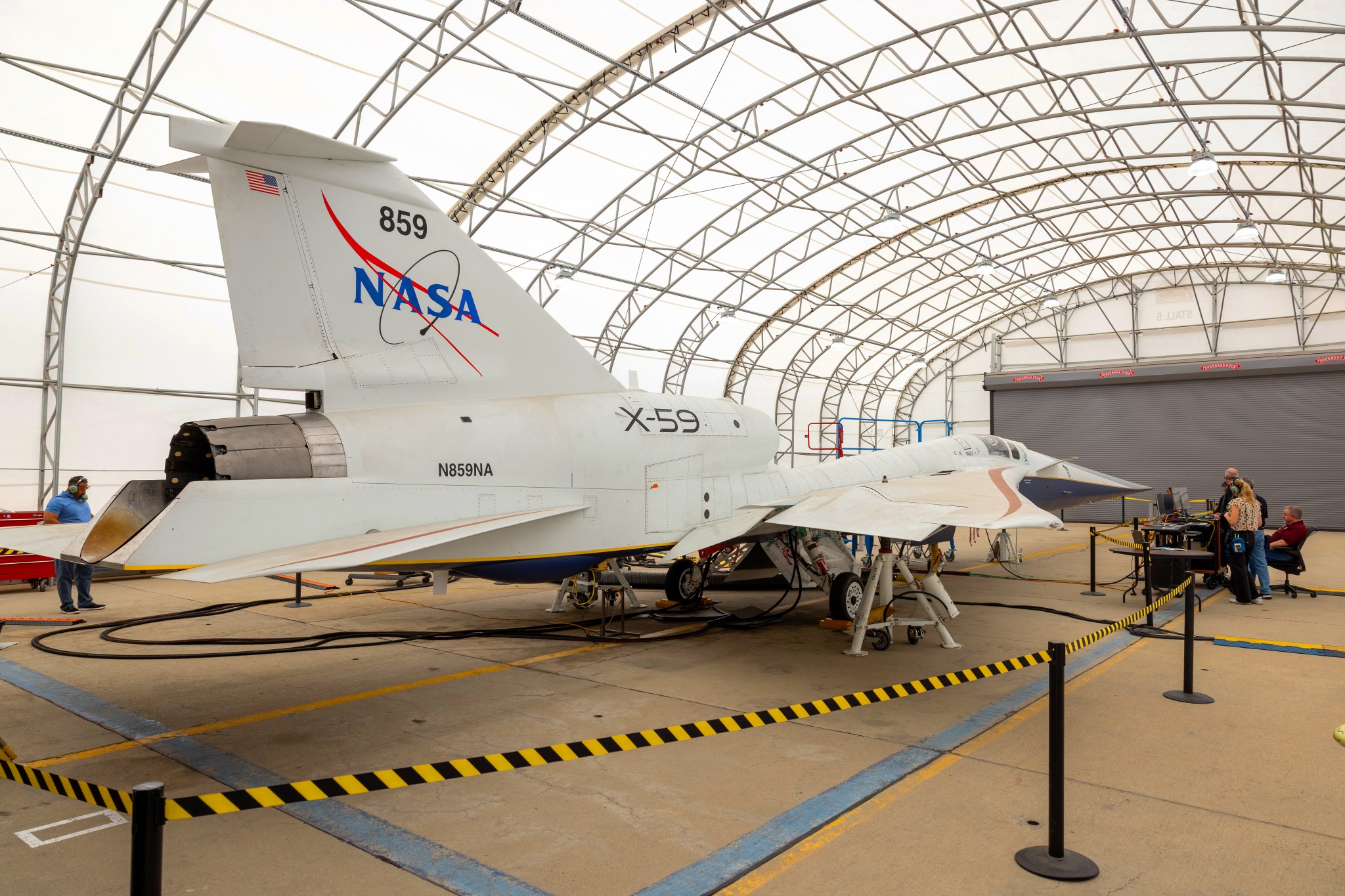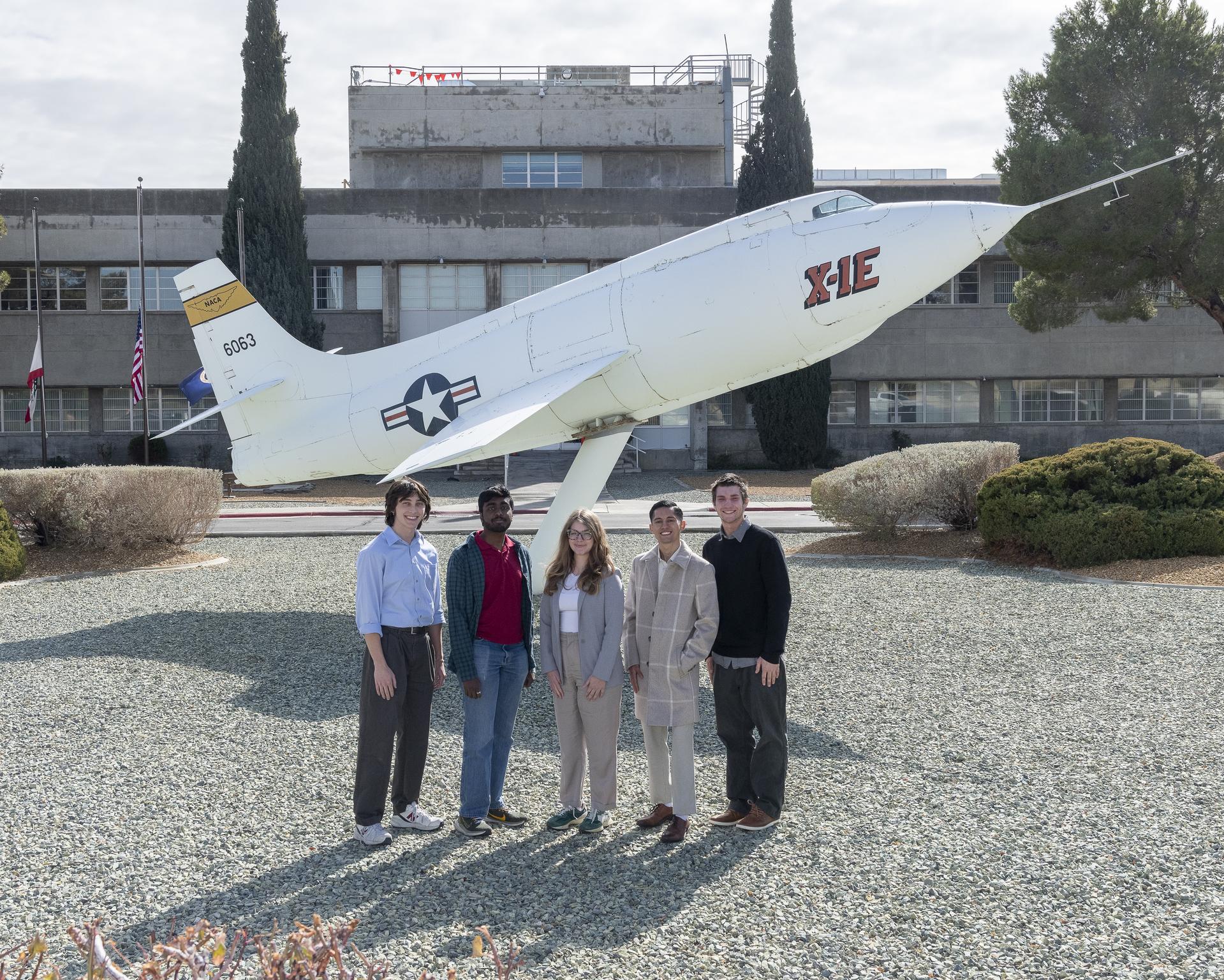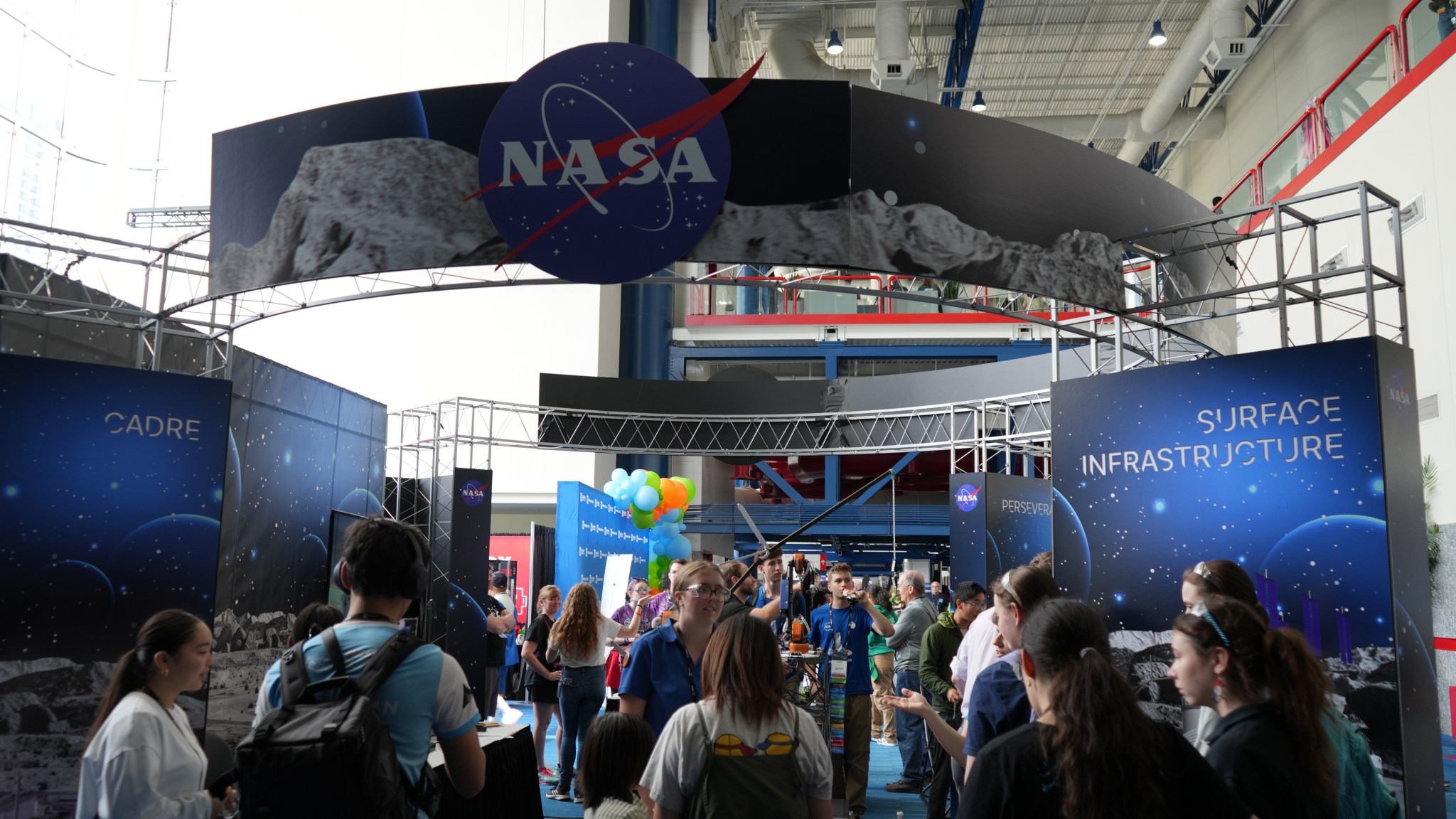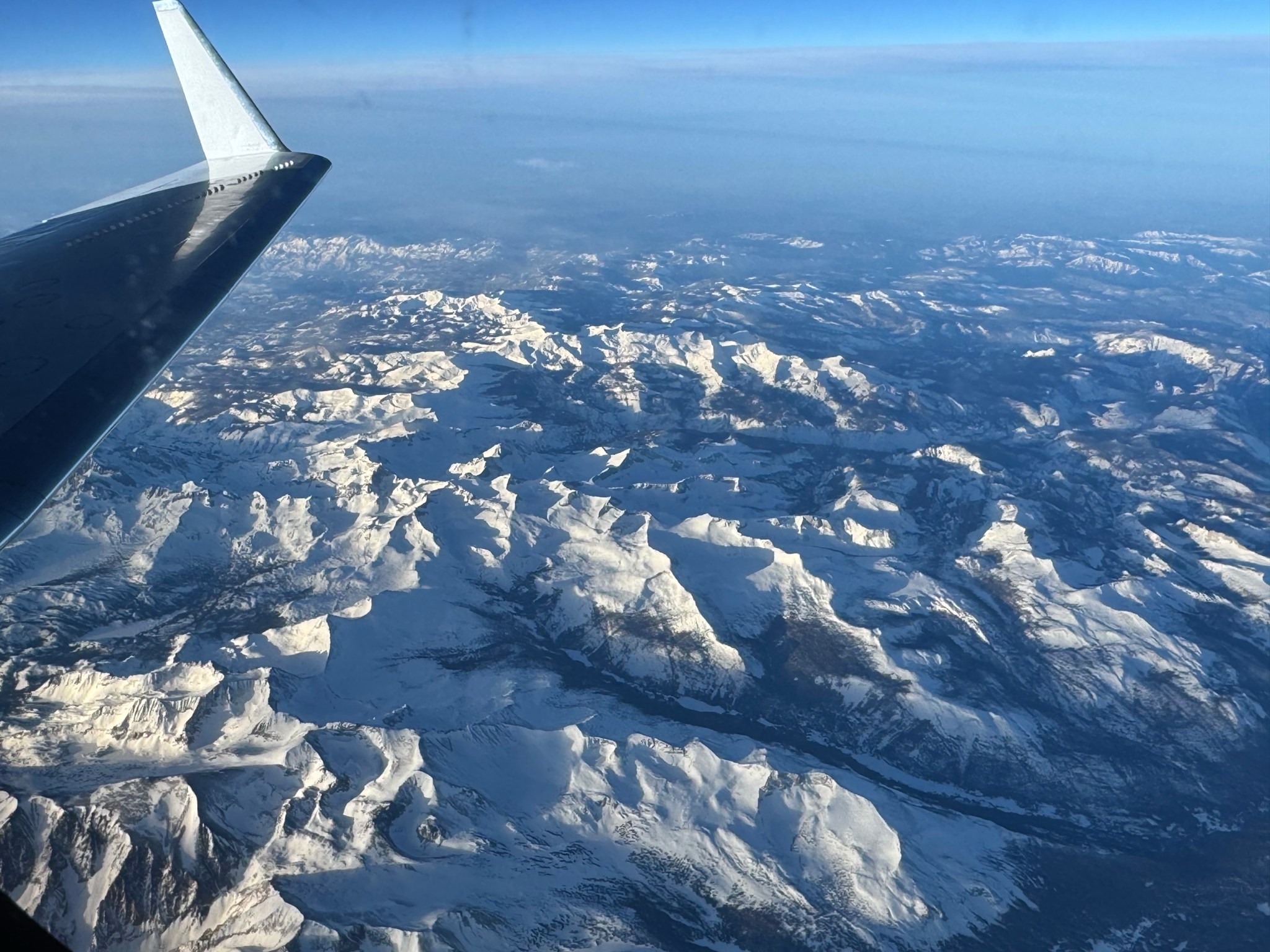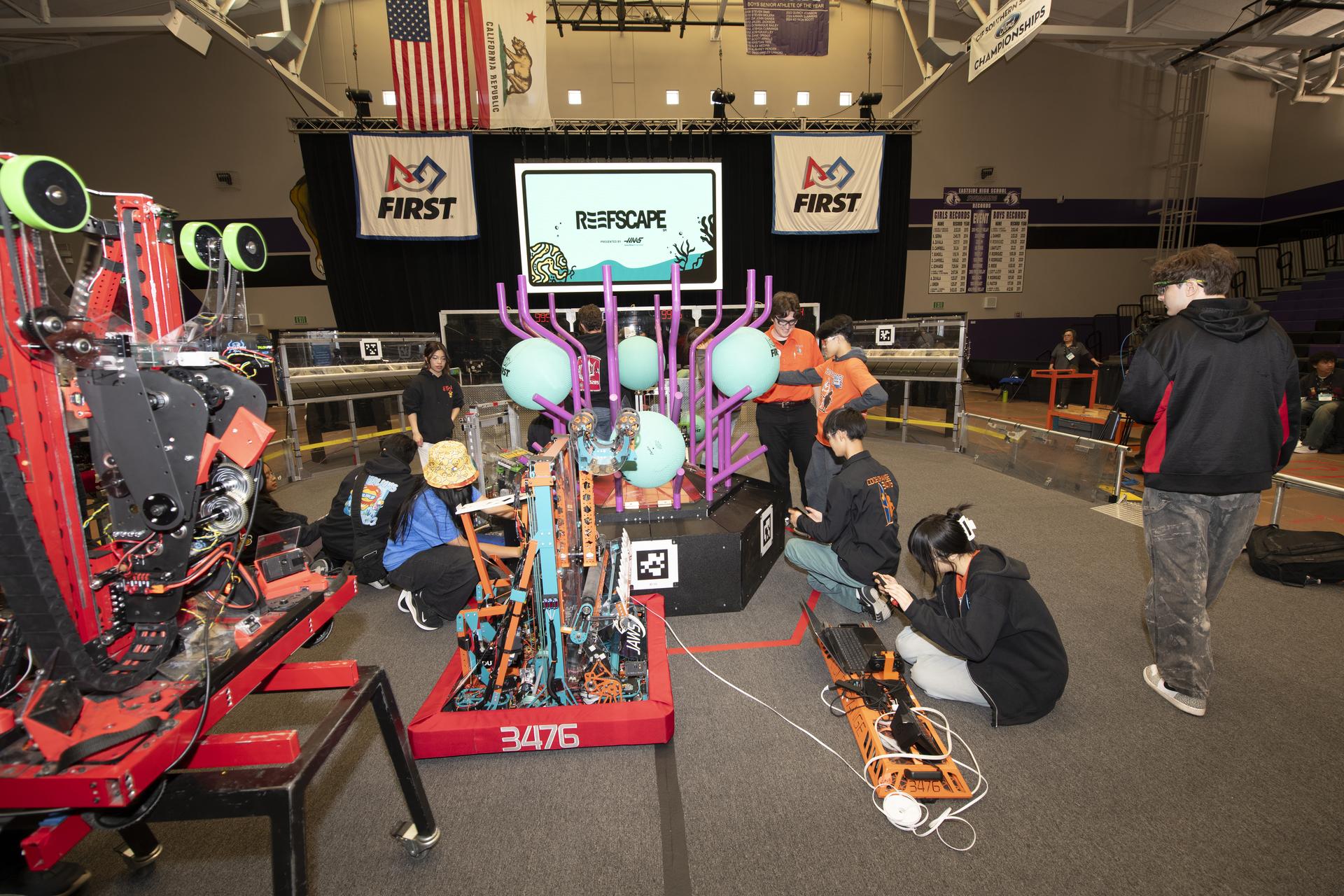2 min read Preparations for Next Moonwalk Simulations Underway (and Underwater) NASA/Jacob Shaw Capturing the high-stakes work behind NASA’s Airborne Science Program takes more than just technical skill – it takes vision. At NASA’s Armstrong Flight Research Center in Edwards, California, videographer Jacob Shaw brings that vision to life, documenting missions with a style and storytelling approach all his own. “Armstrong is full of cutting-edge flight research and remarkable people,” Shaw said. “Being able to shape how those stories are told, in my own style, is incredibly rewarding.” Armstrong is…
Read MoreTag: Armstrong Flight Research Center
NASA X-59’s Latest Testing Milestone: Simulating Flight from the Ground
5 min read Preparations for Next Moonwalk Simulations Underway (and Underwater) NASA’s X-59 quiet supersonic research aircraft is seen during its “aluminum bird” systems testing at Lockheed Martin’s Skunk Works facility in Palmdale, California. The test verified how the aircraft’s hardware and software work together, responding to pilot inputs and handling injected system failures. Lockheed Martin / Garry Tice NASA’s X-59 quiet supersonic research aircraft successfully completed a critical series of tests in which the airplane was put through its paces for cruising high above the California desert – all…
Read MoreNASA Careers Take Off with Internships
4 min read Preparations for Next Moonwalk Simulations Underway (and Underwater) The 2025 internship class at NASA’s Armstrong Flight Research Center in Edwards, California, stand in front of the historic X-1E aircraft on display at the center. From left are interns: Tyler Requa, Gokul Nookula, Madeleine Phillips, Oscar Keiloht Chavez Ramirez, and Nicolas Marzocchetti. NASA/Steve Freeman Lee esta historia en español aquí. Do you dream of working for NASA and contributing to exploration and innovation for the benefit of humanity? The agency’s internship programs provide high school and college students opportunities…
Read MoreNASA STEM Programs Ignite Curiosity Beyond the Classroom
3 min read Preparations for Next Moonwalk Simulations Underway (and Underwater) Gary Laier, center liaison for the Small Business Innovation Research/Small Business Technology Transfer (SBIR/STTR) program at NASA’s Armstrong Flight Research Center in Edwards, California, teaches students about aeronautics during Aero Fair at Tropico Middle School in Rosamond, California, on April 9, 2025. NASA/Genaro Vavuris When curiosity takes flight, learning knows no bounds. The impact of supporting STEM education extends far beyond the classroom, shaping the future of innovation and exploration. NASA Engages is the agency’s outreach website that connects…
Read MoreRobots, Rovers, and Regolith: NASA Brings Exploration to FIRST Robotics 2025
What does the future of space exploration look like? At the 2025 FIRST Robotics World Championship in Houston, NASA gave student robotics teams and industry leaders a first-hand look—complete with lunar rovers, robotic arms, and real conversations about shaping the next era of discovery. Students and mentors experience NASA exhibits at the 2025 FIRST Robotics World Championship at the George R. Brown Convention Center in Houston from April 16-18. NASA/Sumer Loggins NASA engaged directly with the Artemis Generation, connecting with more than 55,000 students and 75,000 parents and mentors. Through…
Read MoreNASA Tracks Snowmelt to Improve Water Management
3 min read Preparations for Next Moonwalk Simulations Underway (and Underwater) The C-20A aircraft, based at NASA’s Armstrong Flight Research Center in Edwards, California, flies over the Sierra Nevada Mountains in California for the Dense UAVSAR Snow Time (DUST) mission on Feb. 28, 2025. The DUST mission collected airborne data about snow water to help improve water management and reservoir systems on the ground. NASA/Starr Ginn As part of a science mission tracking one of Earth’s most precious resources – water – NASA’s C-20A aircraft conducted a series of seven…
Read MoreNASA Studies Wind Effects and Aircraft Tracking with Joby Aircraft
3 min read Preparations for Next Moonwalk Simulations Underway (and Underwater) One of several NASA distributed sensing ground nodes is set up in the foreground while an experimental air taxi aircraft owned by Joby Aviation sits in the background near NASA’s Armstrong Flight Research Center in Edwards, California, on March 12, 2025. NASA is collecting information during this study to help advance future air taxi flights, especially those occurring in cities, to track aircraft moving through traffic corridors and around landing zones. NASA/Genaro Vavuris NASA engineers began using a network of…
Read MoreNASA Supports Next Generation of Innovators
2 min read Preparations for Next Moonwalk Simulations Underway (and Underwater) Robotics teams gather on the main floor of the 2025 Aerospace Valley FIRST Robotics Competition at Eastside High School in Lancaster, California, adjusting and testing the functions of their robots, on April 3, 2025 NASA/Genaro Vavuris A group of attendees to the 2025 Aerospace Valley FIRST Robotics Competition gather outside Eastside High School’s gymnasium in Lancaster, California, to watch an F/A-18 from NASA’s Armstrong Flight Research Center, in Edwards, California, fly over the school to kick off the competition,…
Read MoreTesting in the Clouds: NASA Flies to Improve Satellite Data
3 min read Preparations for Next Moonwalk Simulations Underway (and Underwater) Piloted by NASA’s Tim Williams, the ER-2 science aircraft ascends for one of the final science flights for the GSFC Lidar Observation and Validation Experiment (GLOVE) on Feb. 1, 2025. As a collaboration between engineers, scientists, and aircraft professionals, GLOVE aims to improve satellite data products for Earth Science applications. NASA/Steve Freeman In February, NASA’s ER-2 science aircraft flew instruments designed to improve satellite data products and Earth science observations. From data collection to processing, satellite systems continue to…
Read MoreNASA Measures Moonlight to Improve Earth Observations
The airborne Lunar Spectral Irradiance (air-LUSI) instrument is moved across the hangar floor by robotic engineer Alexander McCafferty-Leroux ,from right to left, co-investigator Dr. John Woodward, NIST astronomer Dr. Susana Deustua, air-LUSI chief system engineer Dr. Kathleen “Kat” Scanlon, and members of the ER-2 ground crew at NASA’s Armstrong Flight Research Center in Edwards, California, in March 2025. NASA/Genaro Vavuris Flying high above the clouds and moon-gazing may sound like a scene from a timeless romance, but NASA did just that in the name of Earth science research. In March…
Read More